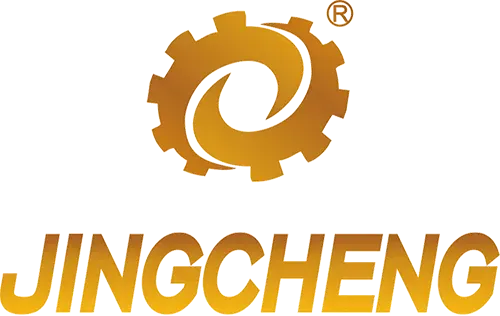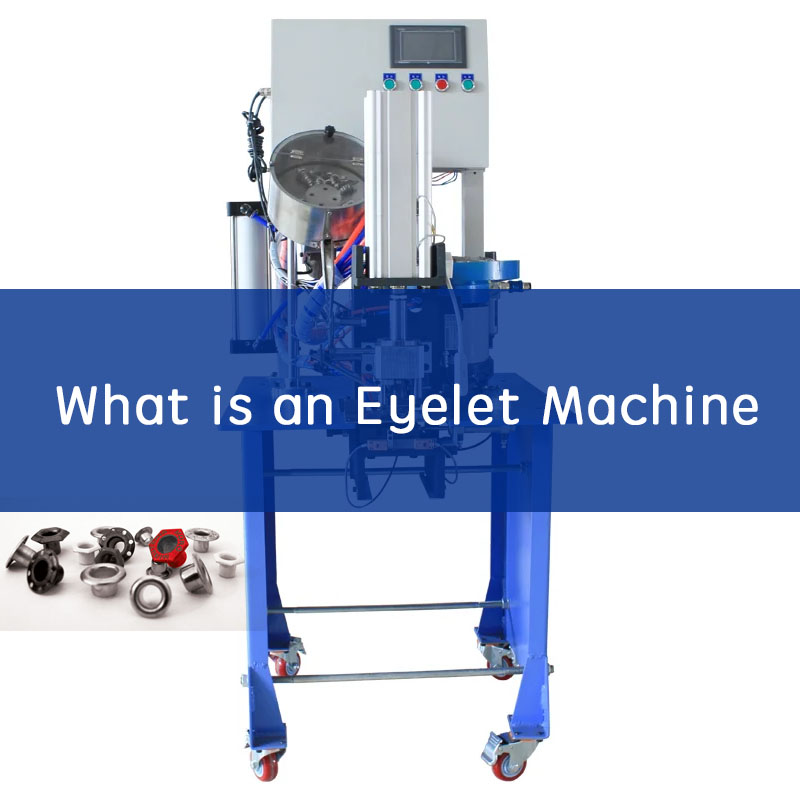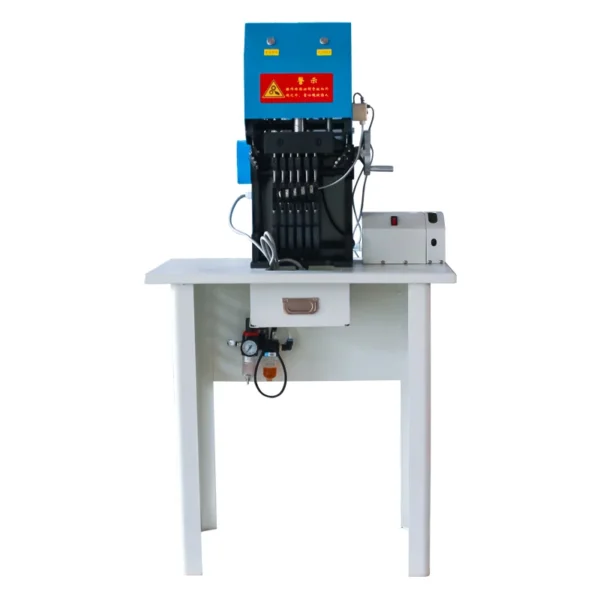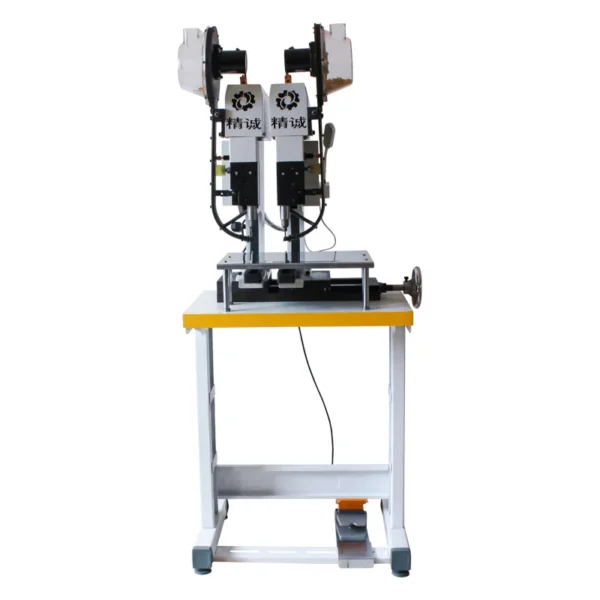Eyelet machines are essential tools in various industries, What is an Eyelet Machine, Eyelet Punching Machine are used for attaching metal eyelets or grommets and plastic rings to materials such as fabric, leather, PVC, and paper. Jingcheng Zhiyuan, a leading manufacturer based in China, offers a range of high-quality Eyelet machines designed to meet diverse industry requirements.
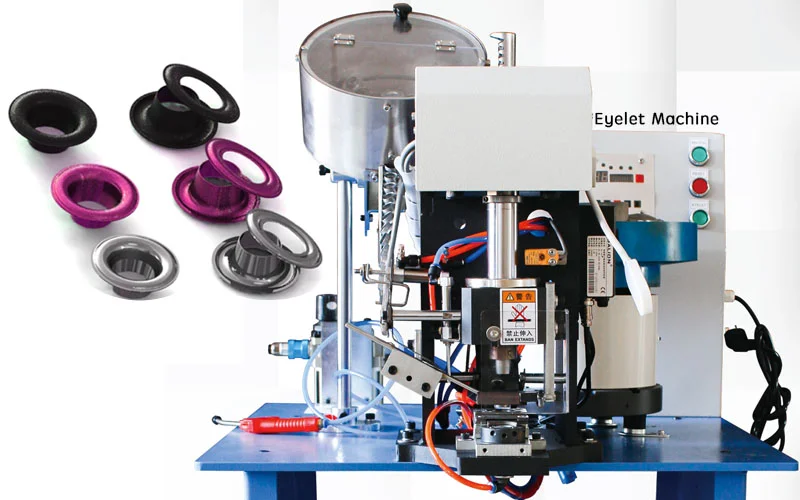
What is an Eyelet Machine and How Does It Work?
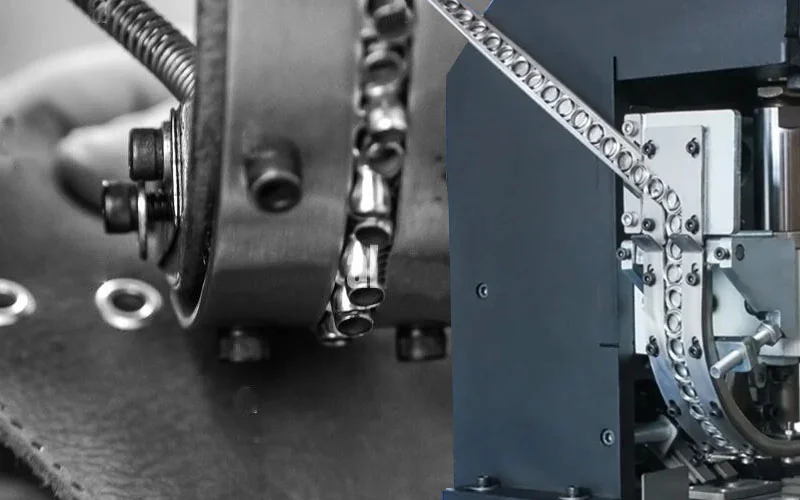
In this comprehensive guide, we will explore what is an eyelet machine. how it works, its benefits, types, and tips for troubleshooting common problems.
Eyelet machines play a crucial role in multiple industries. In the garment industry, they are essential for adding eyelets to clothing for laces or decorative purposes. In the footwear industry, eyelet machines ensure the durability and functionality of shoelaces. In packaging, they help reinforce holes for tags or string ties, enhancing the strength and aesthetics of products. Their versatility extends to leather goods, banners, and industrial applications, making them indispensable in modern manufacturing.
Early eyelet machines were manually operated and rudimentary in design but marked a significant advancement from hand tools.
With technological advancements, eyelet machines evolved significantly. The transition from manual to semi-automatic and fully automatic machines has revolutionized industries that rely on eyelets. Innovations in materials, design, and automation have enhanced the efficiency, precision, and versatility of these machines, keeping pace with the growing demands of various sectors.
What is an Eyelet Machine:Types of Eyelet Punching Machine
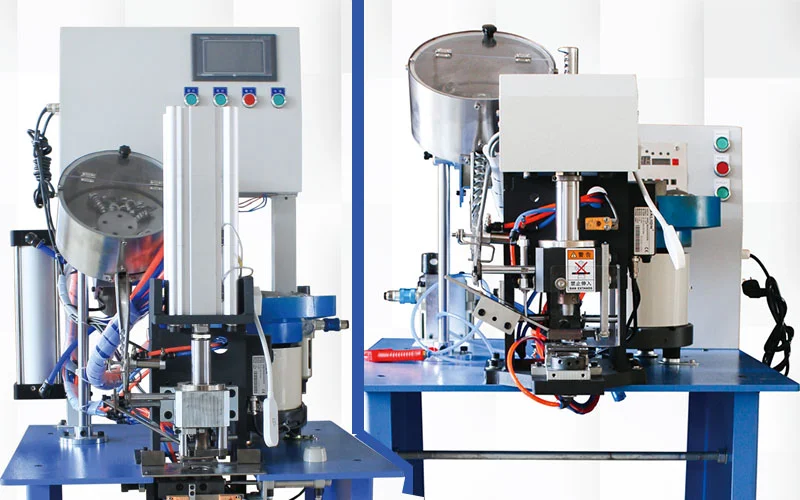
The above introduction roughly explains what is an eyelet machine. Next, let’s learn more about the types of Eyelet Machines and the mainstream Eyelet Machines that have changed labor costs and improved production efficiency.
Manual Eyelet Machines
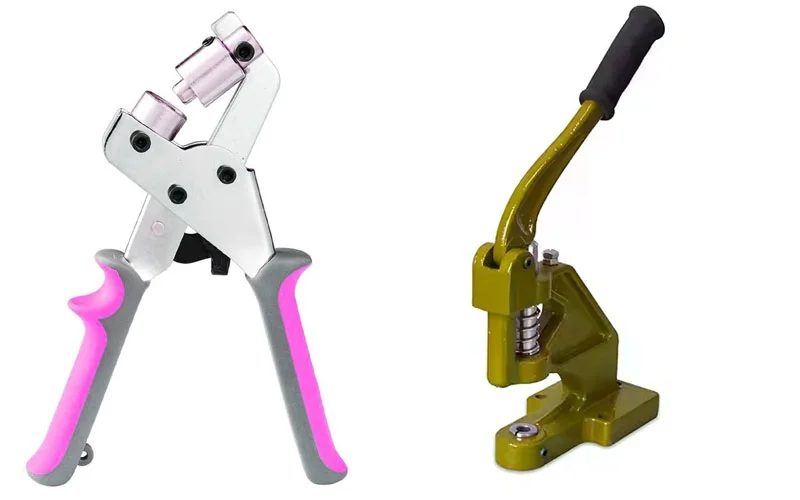
Manual eyelet machines are operated by hand, requiring physical effort to punch the eyelets into materials. They are suitable for small-scale operations or for applications where precision and control are paramount. These machines are cost-effective and easy to use, making them ideal for hobbyists or small businesses.
Semi-Automatic Eyelet Machines
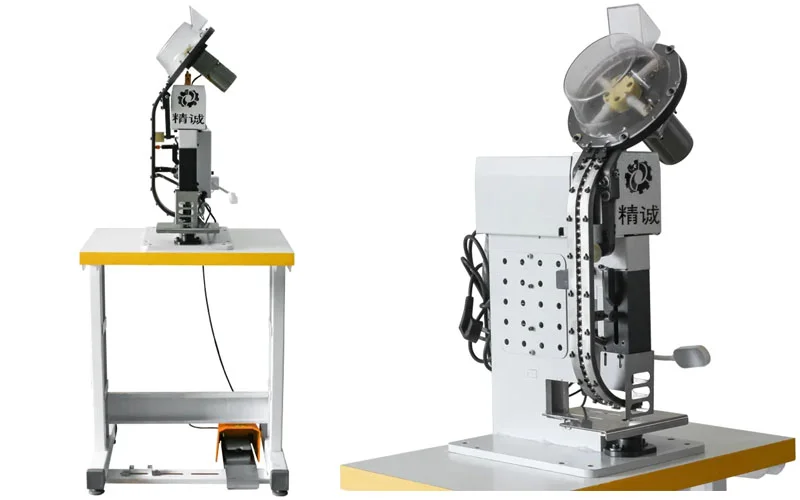
Semi-automatic eyelet machines offer a balance between manual and fully automatic machines. They require some manual input but automate the more labor-intensive aspects of the process. These machines are suitable for medium-scale operations and provide a good compromise between cost and efficiency.
Fully Automatic Eyelet Machines
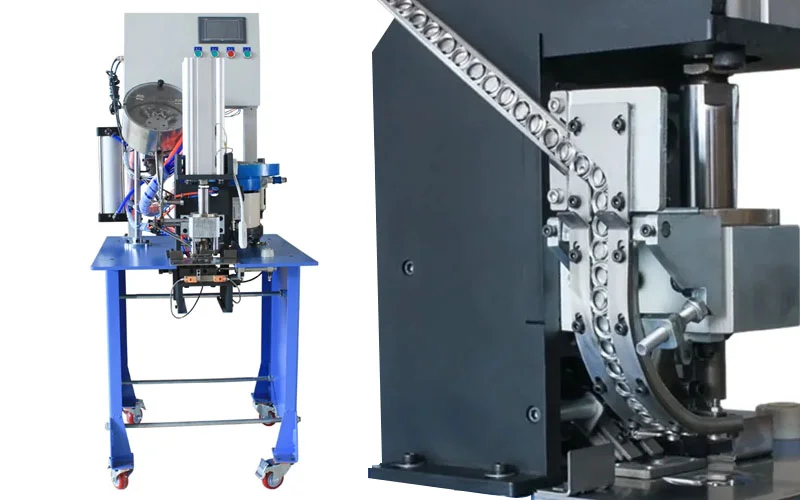
Fully automatic eyelet machines are designed for high-volume production. They automate the entire process, from feeding the materials to placing and securing the eyelets. These machines offer the highest efficiency and consistency, making them ideal for large-scale manufacturing operations. They are more expensive but provide significant long-term benefits in terms of productivity and labor savings.
How to Choose an Eyelet Punching Machine
Eyelet Machines Technical Specifications
The types of Eyelet Machines facilitate the use of various industries. Understanding Eyelet Machines Technical Specifications is the path to professional learning based on the understanding of What is an Eyelet Machine.
Key Components
Eyelet machines consist of several key components, including the feeding mechanism, punching system, die set, and control unit. Each component plays a crucial role in ensuring the machine operates smoothly and efficiently.
We design, develop, and produce two types of punching systems: 220V electric and Air compressor pneumatic. There are different punching methods for materials of different thicknesses.
Material and Build Quality
We purchase high-quality steel plates and design them independently to ensure that the material and build quality of eyelet machines are critical for their durability and performance. High-quality machines are typically made from robust materials like steel and feature precision-engineered parts to withstand the rigors of continuous use.
Size and Dimensions
Eyelet machines come in various sizes and dimensions to accommodate different production needs. We can customize your special Eyelet machines according to your industry, operating space, and production capacity. We recommend automatic machines are designed for stationary use in industrial settings. Save labor costs and easy to operate.
Power Source and Consumption
semi-automatic and fully automatic machines are typically powered by electricity. The power consumption of These machines varies based on their size and complexity, with larger machines consuming more power due to their advanced features and higher production capacities
Explain the Process of How an Eyelet Machine Works
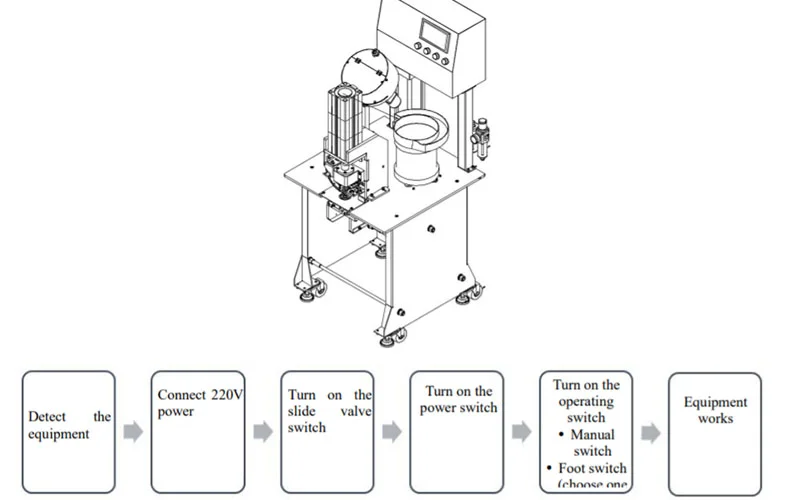
The following steps are involved in eyelet machine making eyelets:
Step 1 The material is placed on the machine so that the punch and die set are in line with the intended eyelet insertion site.
It may be integrated with the automated production line system and is simple to use.
Step 2:The die set receives an eyelet from the feeding system, which makes sure it is positioned correctly for connection.
For thin fabric and no wire drawing condition, use a single die.
For thick fabric and high densities, use two dies.
Step 3:The eyelet is put through the hole that the punch makes in the material.
Step 4: With the aid of the die set, the press mechanism exerts stress on the eyelet, shaping and securing it to the material.
Until all necessary eyelets are fastened to the material, the operation is repeated.
You have complete control over switching between the verticle and horizontal types. The machine has a frame that may be detached. For ease of mobility, the machine has universal wheels installed.
Eyelet Machines Applications

How to use, how to choose, and how to operate the eyelet machine. Now that we have a comprehensive understanding of what is an eyelet machine, what specific industries has it become a mature tool for?
Garment Industry
In the garment industry, eyelet machines are used to add eyelets to clothing for both functional and decorative purposes. They are commonly used in items like hoodies, corsets, belts, and more, providing a professional finish and enhancing the garment’s durability. What is an Eyelet Machine? It is a crucial tool in the garment industry that ensures each eyelet is securely attached, contributing to the overall quality and longevity of the clothing.
Footwear Industry
The footwear industry relies heavily on eyelet machines for attaching eyelets to shoes. These eyelets are essential for threading laces and providing a secure, reinforced hole that can withstand repeated use and stress. What is an Eyelet Machine? It is an indispensable machine in the footwear industry that guarantees the durability and functionality of shoe eyelets.
Paper and Packaging Industry
Eyelet machines are used in the paper and packaging industry to reinforce holes in products such as tags, banners, and packaging materials. This reinforcement ensures that the holes do not tear easily, maintaining the integrity and appearance of the products.
Leather Goods Industry
In the leather goods industry, eyelet machines are used to add eyelets to products like bags, belts, and wallets. These eyelets provide both functional reinforcement and decorative elements, enhancing the durability and aesthetic appeal of leather items.
Industrial Applications
Eyelet machines are also used in various industrial applications, such as manufacturing machinery, automotive components, and other heavy-duty products. They help reinforce holes in metal and plastic components, ensuring they can withstand mechanical stress and wear.
Eyelet Punching Machine Benefits
Improved Efficiency
Eyelet machines significantly improve production efficiency by automating the process of attaching eyelets. This automation reduces the time and labor required, allowing manufacturers to increase their output and meet higher demand. What is an Eyelet Machine? It is a device designed to streamline the eyelet attachment process, making it an essential tool for boosting production efficiency.
Enhanced Precision
Modern eyelet machines offer high precision, ensuring that each eyelet is placed accurately and securely. This precision reduces waste and ensures a consistent, high-quality finish across all products. For those wondering, What is an Eyelet Machine? It is a machine that provides unmatched precision in attaching eyelets, which is crucial for maintaining product quality.
Versatility and Flexibility
Eyelet machines are versatile and can be used with a variety of materials, including fabric, leather, paper, and plastic. This flexibility makes them suitable for a wide range of applications across different industries.
Cost-Effectiveness
Although the initial cost of an eyelet machine can be high, the long-term benefits in terms of increased efficiency, reduced labor costs, and improved product quality make them a cost-effective investment for many businesses.
FAQs
What is an Eyelet Punching Machine used for?
An eyelet machine is used to securely attach eyelets to materials like fabric, leather, paper, and plastic. These eyelets reinforce holes, providing durability and a clean, professional finish. They are commonly used in the garment, footwear, packaging, and industrial sectors to ensure holes remain intact and functional.
How do you maintain an Eyelet Punching Machine?
Maintaining an eyelet machine involves regular cleaning, lubrication, and inspection of components. Key maintenance steps include:
Cleaning: Remove debris and residue from the machine parts to prevent jams and ensure smooth operation.
Lubrication: Apply appropriate lubricants to moving parts to reduce friction and wear.
Inspection: Regularly check for worn or damaged parts and replace them as necessary.
Calibration: Ensure the machine settings are correct for the materials and eyelets being used.
Following the manufacturer’s maintenance schedule and guidelines helps keep the machine in optimal working condition.
What are the differences between manual and automatic eyelet machines?
Manual Eyelet Machines: These require physical effort to punch the eyelets into materials. They are cost-effective, easy to use, and suitable for small-scale operations or hobbyists.
Automatic Eyelet Machines: These machines automate the process of attaching eyelets, increasing efficiency and consistency. They are ideal for large-scale production due to their speed and precision but are more expensive and require more training to operate.
Conclusion
What is an Eyelet Punching Machine, Through the article, we can understand What is an Eyelet Machine. Eyelet machines are essential tools in various industries, providing efficient and precise reinforcement of holes in materials. They have evolved significantly over time, with modern machines offering advanced automation features and improved efficiency.
Eyelet machines are a valuable investment for businesses looking to improve their production processes. Despite the initial cost and maintenance requirements, the long-term benefits in terms of increased efficiency reduced labor costs, and improved product quality make them indispensable.
